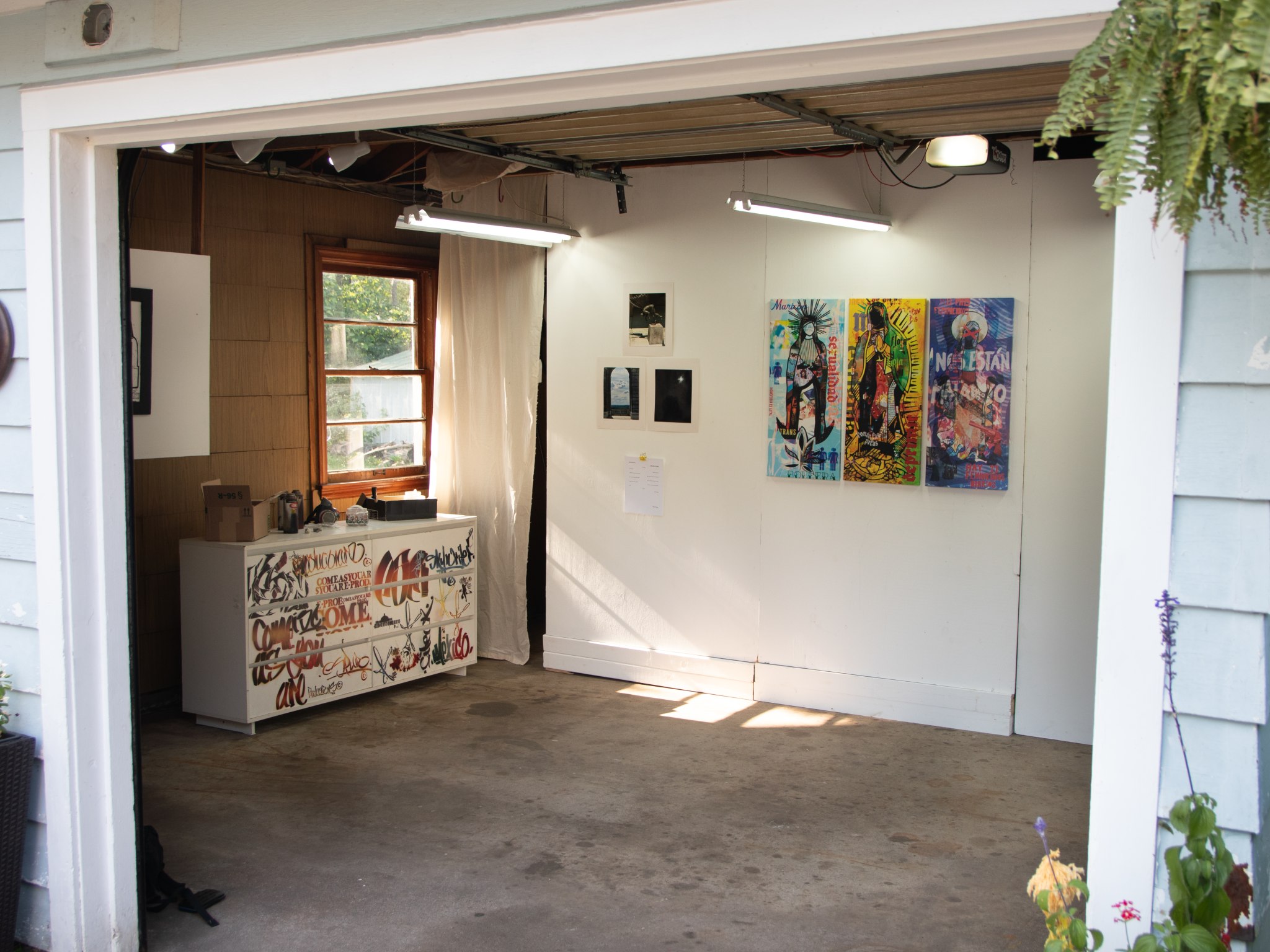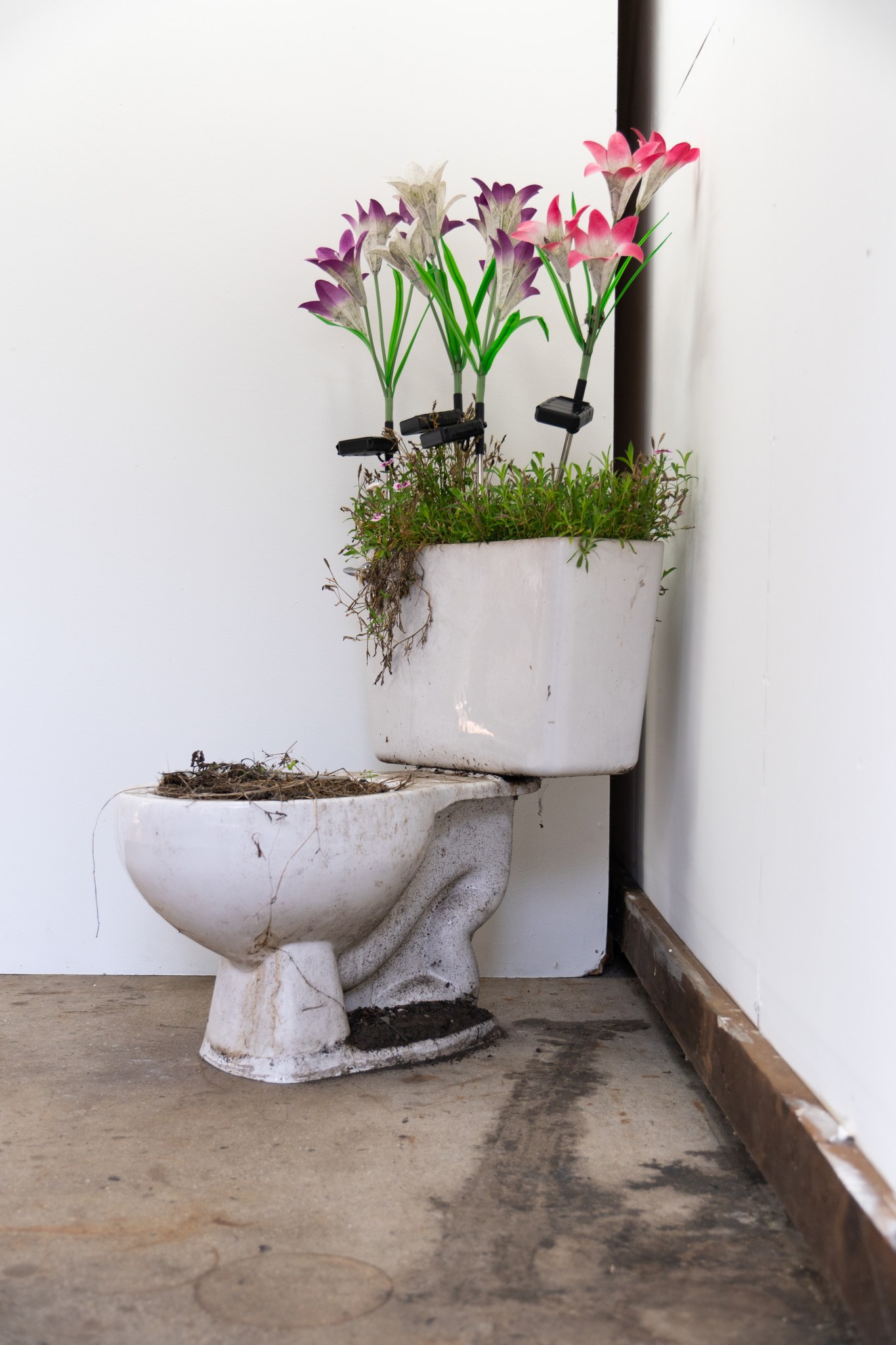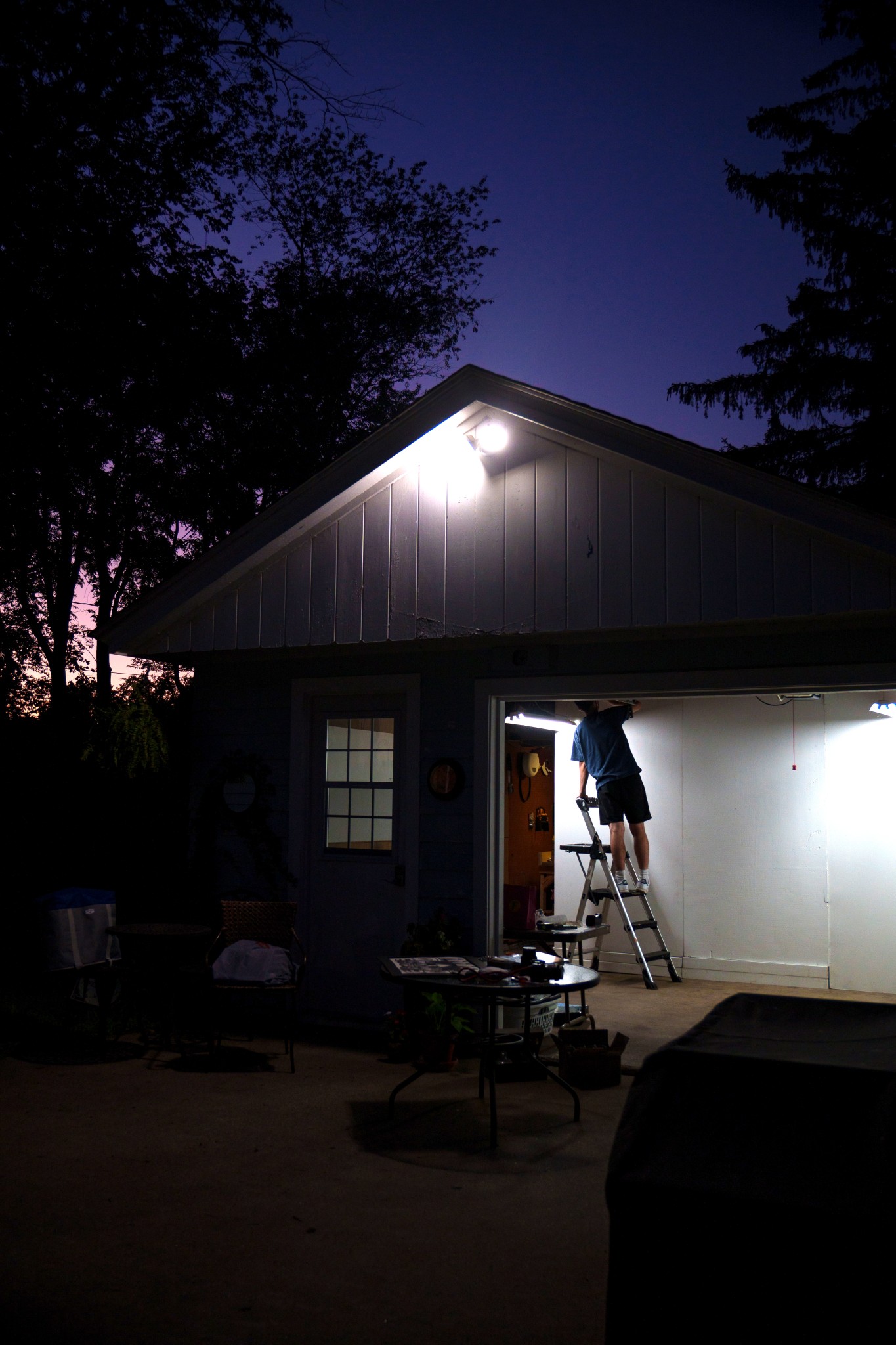
I write this in the months following the MdW Summit 2024 in Kansas City, MO. The summit, a gathering of artist-run spaces in the Midwest, is a week-long endeavor including workshops, studio visits, discussions, and panels. Being plugged into a greater cultural conversation surrounding the Midwest art ecosystem is enlightening. Coming from a smaller town in West Michigan it can often feel like one is working in a vacuum. The summit provided me with an intense amount of generativity, deepening my understanding of the potential of artist-run spaces and fostering connections with kindred spirits throughout the Midwest. I also realized that to integrate this newfound energy into my practice, I need to retire my project: The Garage.
Attempting a graceful dismount has been on my mind for months. One of my main goals with The Garage was simply to see an idea through—from building the exhibition space to creating work, curating shows, handling marketing, and eventually de-installing. Our inaugural exhibit, On Pace, accomplished that. Long-term programming wasn’t part of the original plan, but a second summer of shows happened almost by chance—thanks to a $4,000 grant that landed in my lap. (Sure, I applied, but it always felt like luck.)
During this second round of programming, I witnessed a real community form around The Garage. In a town with little in the way of an art scene, that felt special. Stepping into the role of artist organizer was an unexpected but welcome shift, and I’m grateful to everyone who shows up to our events. Showing up isn’t always easy.
Ultimately, I’ve realized that the ideas I want to pursue are fundamentally different from what The Garage represents. My time in Kansas City gave me the space to reflect, and it became clear that my current interest lies in artist-run, alternative models of education—not just putting on garage art shows. That’s not to diminish the value of DIY exhibition spaces (I’ll likely continue curating them), but I believe West Michigan is ready for something more: an alternative school. In recent years, spaces like the Urban Institute for Contemporary Arts and Cultivate GR have closed, while graduate programs at Kendall College of Art and Design have steadily declined. While this is disheartening, I also see an opportunity to rebuild the creative community that was lost.

We can take inspiration from our creative siblings in the music scene. The folks at The Treehouse, Free Space Shows, and Recreation Co. have built incredible support systems for local artists, proving that grassroots efforts can be just as powerful as well-established institutions. If you’ve ever been in the midst of one of their shows, you’ve felt that energy firsthand—the kind that transforms a space and brings a community together.
As I prepare to close my current project space, I also ponder about the responsibilities of shutting down a space that hosts a nascent community. For two summers, there has been a consistent 15-20 people who show up to nearly every event. Oftentimes these folks are collaborators in curation, installation, design, and general ideation of what The Garage could be. I feel a sense of responsibility to them for all their support. In search of models for what to do, I am reminded of Seth Cameron’s beautiful and feces-centered death manifesto regarding his project: Bruce High Quality Foundation University (BHQFU). BHQFU was an artist-run, NYC-based, unaccredited art school. It ran from 2009 to 2017 and at one point, served some 800 students by offering free, graduate-level art education.
At the heart of Cameron’s 2017 article “Broken Toilet: BHQFU is Dead” is an analogy—comparing BHQFU to a broken, overflowing (yet continually used) toilet discovered in their space the day after an exhibition opening. The metaphor suggests that the Foundation University (or FU, for short) was a victim of its own success—simply put, there was too much shit. Cameron also reminds us of the driving force behind BHQFU, or as he puts it, the ‘SHIT PILE BEFORE US’: the prohibitively expensive and hyper-professionalized MFA system. Ultimately, he concludes his essay with this:
“We got lazy. I got lazy. It’s just easier to call BHQFU a ‘school’ or an ‘institution’ or a ‘nonprofit’ or an ‘art project.’ It’s just easier to not worry about where the money comes from, or how the curriculum gets designed. And without any sign giving us an urgent I’m going to piss myself–sense of the imperative of participation in a social contract, Donald Trump is going to keep being the President of the United States and BHQFU is going to become just another offering on a ‘Free Crap To Do in Brooklyn” listicle.
So, before BHQFU stops meaning ‘THE SHIT PILE BEFORE US’ and starts meaning ‘someone else will fix it,’ let’s take down the sign. BHQFU is dead. There’s no space, no classes, no faculty, no students, no staff, no president, no plan. All that remains is a problem. It’s my problem, Bruce’s problem, and it’s yours if you want it.”
I’m eager to take on the shit before us—but not Brooklyn’s shit. I’m focused on something closer to home, a regional challenge rooted in Michigan’s western shoreline. One that lingers in the wake of our fading or soon-to-fall cultural institutions.
While discussing the topic of this essay, a friend reminded me that The Garage too once housed a toilet. As most of my friends know, I had a near obsession with the art piece Nuevo comienzo featured in our exhibit Arte Michigano. Nuevo comienzo is a toilet that was rebirthed as a backyard sculpture and authored by a close friend’s mom. As his mom renovated their bathroom, the toilet narrowly avoided the dump (both kinds). Now, it lives amidst a beautiful backyard garden and is fitted with colorful, solar-powered LED flowers. I see the piece as a product of Mexican and Mexican-American alchemy. The same magic that transforms chiles into salsa and avocado into guacamole. The Garage follows this same spirit. Our walls are composed of surplus drywall and recycled film flats from a local university’s film department. Many of our initial posters were made from discarded paper and other materials quickly available at hand. The space is scrappy, ad-hoc, and the fruits of many people’s labor—both physical and conceptual. Nevertheless, I feel it is time for a new beginning of my own.

I see The Garage as a precursor to a new idea I am interested in exploring—the potential of an artist-run educational space. A new banner and space allow me to restructure and, maybe more importantly, choose a new name. Cause really... ‘The Garage’? My former project was learning how to construct the space. Now I am interested in what I can do with the space. This new project isn’t meant to be a replacement of MFA programs in the way BHQFU fervently attempted to challenge them. I cannot offer folks a degree. I cannot offer folks a job (...yet). What I can offer is a place to experiment and to test the conceptual pliability of ideas, materials, lesson plans, artist talks, exhibitions, artmaking, critique, silent thought, community design, dialogue, et al.
The etymological root of “school” comes from the Greek σχολή (scholē), which originally meant “leisure.” The word “leisure” itself has roots in the Latin licere, meaning “to be allowed” or “permitted.” I want to create a space that grants people—especially those from historically underserved communities—the freedom to explore the potential of art in its many manifestations. This new space will offer everything from introductory art workshops to critique clubs and graduate-level programming, all deeply connected to the community it serves. I propose an educational experience that is entirely experiential, shaping every aspect of the organization. Want to learn how to write a grant? Come to the studio. Interested in teaching? Come to the studio. Want to learn to prep a gallery space? Come to the studio. Have a community proposal idea? Come to the studio. Want to apply to residencies? Come to the studio. Need a flyer for a local event? Come to the studio. (I can’t guarantee this just yet, but I’m manifesting it here—I want a printer. Printers can be mutual aid.) We may not always have the answers, but that’s not necessarily the point.

It would be ambitious to claim that this new space will fundamentally transform Holland’s community. I can’t say for certain that it will. I’m not chasing some art utopia or searching for the singular, best solution to a problem— we’re not a design or architecture firm. Instead, I want this space to serve as a call to our local art community, a place where dialogue and artmaking take center stage. Through that, we might create something new—or even many things. At the very least, it will be a space to engage with culturally relevant ideas. By fostering this community, I hope to challenge the assumption that meaningful cultural production happens only in large metropolitan areas and push back against the sentiment of urban normativity.
Comunidad de reflexión experimental y artes (Community of Experimental Reflection and Arts), or CREA for short, is my vision for an artist-run educational space. We’ll start with a critique club and a series of workshops aimed at fostering both beginning and experienced artists. All programming will be free to ensure accessibility for everyone. From there, the possibilities are wide open—community newspaper stands, smartphone filmmaking, a residency program, a zine library, community-led film screenings, and open-deck DJ nights. Whether or not every idea comes to life, the goal remains the same: to build something that invites learning, collaboration, and experimentation.
